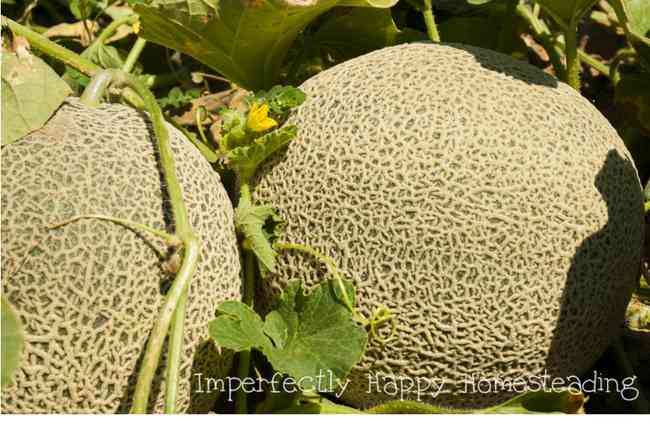

While I’m discussing replenishing the soil with plants, I should mention borage! As borage decomposes, it releases potassium and calcium into the soil and helps you grow more cantaloupe. Use trellises or cattle fence panels for pole beans to train them to grow up instead of out since the cantaloupe will have the ground covered.Īs you cycle bean plants through your cantaloupe patch, be sure to cut off the ones you remove at the soil level, leaving their roots behind to feed your produce! Borage Borage enriches the soil with potassium and calcium for improved cantaloupe production. Try alternating rows of cantaloupe and beans. Cantaloupe plants are heavy feeders and will benefit greatly from having succession-planting of beans in their area.Īs the beans are alive, they absorb nitrogen from the air and fix it in their roots once the older bean plants have died back and you cut them off at the soil, their roots decay into the soil and release all of the nitrogen they’d stored for your cantaloupe plants.īush and pole bean varieties will both work. Beans Planting beans alongside cantaloupe provides nitrogen fixation and beneficial support.īeans benefit many plants since they can fix nitrogen in the soil. If you have doubts, it makes a great container plant when placed near a melon patch. It has a shallow root system that shouldn’t compete with cantaloupe.

This aromatic herb may ward off many pests, including thrips, which will cause stunted growth and discoloration of cantaloupe plants.īasil has a bushy growth habit that can become quite tall, but if you prune and harvest it frequently enough, it won’t be an issue as a cantaloupe neighbor. You can’t go wrong with basil, in most cases. Basil Basil is a beneficial plant that repels pests and can be a suitable companion for cantaloupe. When choosing plants to grow with your cantaloupe, select species that don’t mind a lot of water and draw in pollinators to help your melons produce as much fruit as possible. You’ll need some trellises and twine to keep things under control. Hale’s Best Jumbo Cantaloupe is a more drought-tolerant variety that can help you use less water.Ĭareful planning can help you avoid crowding issues, but these hardy vines can get out of control and start choking out other plants. (This is why I’m not a melon gardener!) Thirsty cantaloupes shouldn’t be planted next to plants that prefer drier conditions because they’ll drown their neighbors in just a couple of weeks. DisadvantagesĬantaloupes can rack up a water bill quickly during a drought. So, you can allow the vines to surround other plants to protect their roots so they can grow with little disturbance. There aren’t roots on every vine, so a lot of ground is covered by leaves. Cantaloupe roots will prevent it from washing away, and the dense leaf coverage will prevent the dirt from blowing away.Ĭantaloupe can also protect the roots of other plants. If you receive a lot of wind or rain, your garden can lose a lot of dirt. Since cantaloupe covers a lot of ground, it can prevent erosion. Though there are some drawbacks to letting cantaloupe near the rest of your garden, a few good things will make you stop and consider it. What good can a leafy vining plant with large fruit do? A lot, actually. Cantaloupe as Companion Plants These melon vines can prevent erosion and protect other plants’ roots.

Interplanting has many benefits, and cantaloupes can also benefit from this gardening method, despite their long vines and thirst for water. Legumes add nitrogen, so heavy feeder plants will enjoy growing near them. Pairing these plants with others, you’ll see fewer pests because they can’t stand the smell.Ĭompanion planting can also help rejuvenate tired soil. Some plants are highly aromatic and will ward off pests. Consider giving it a try in the Birdies 6-in-1 Metal Raised Garden Bed. That hasn’t always worked out until I learned which plants help and which hurt each other. I have limited space for my plants, so I cram as much as possible in a single space! It has become one of my favorite aspects of gardening. Companion planting is growing multiple species in the same bed so they can help each other out.


 0 kommentar(er)
0 kommentar(er)
